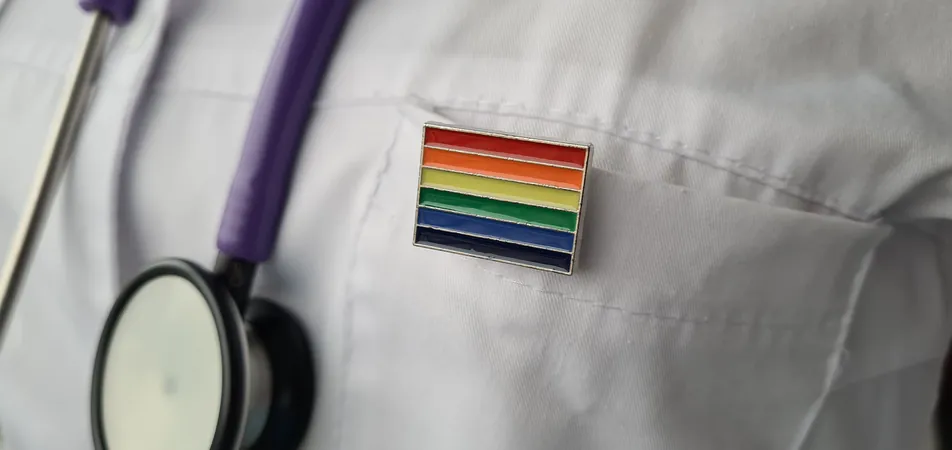
Unlocking Better Health: How Inclusive Language in Dermatology Is Changing Lives for LGBTQ+ Patients
2025-06-18
Author: Arjun
A groundbreaking study published in JAMA Dermatology reveals that using LGBTQ+-inclusive language in dermatology could transform patient care, leading to enhanced health outcomes and more accurate data reporting. This research emphasizes the pivotal role of language in fostering strong relationships between patients and clinicians while dismantling healthcare barriers that have long affected the LGBTQ+ community.
The LGBTQ+ community frequently encounters significant obstacles in accessing healthcare, resulting in high rates of mistreatment. Previous studies indicate that discrimination, insurance issues, and delays in diagnosis exacerbate these challenges, contributing to increased risks of mental health struggles such as depression, substance use disorders, and even violence.
Particularly in dermatology, the effects of gender-affirming testosterone therapy can lead to a surge in acne among female-to-male transgender patients—far more than their cisgender counterparts. This common condition has profound social implications, making it essential for dermatologists to tailor acne treatments that align with patients’ transition goals.
In the study, researchers conducted a thematic analysis of 22 patient-reported outcome measures (PROMs) focused on acne. Astonishingly, they discovered that 4 out of 9 acne-specific measures contained non-inclusive language, with 3 promoting heteronormative terminology. Even commonly used terms like 'partner' weren't uniformly inclusive, highlighting a critical gap.
The implications of adopting LGBTQ+-inclusive language extend beyond just terminology; it paves the way for accurate data collection which is crucial for clinical trials and overall patient care. Moreover, a diverse language approach can significantly enhance relations between patients and healthcare providers.
The urgency for inclusive language in healthcare is underscored by recent political developments, including the FDA's controversial withdrawal of guidance promoting diversity in clinical trials—a move seen by many as a setback for health equity. Experts warn that such rollbacks may hinder the progress needed in precision medicine and create additional barriers for a varied healthcare workforce.
To truly overcome existing healthcare disparities, the study advocates for a reevaluation of outdated language and a commitment to thorough validation research. The authors stress that the focus was primarily on English-language measures, indicating a broad opportunity for global improvement.
In conclusion, the path toward a more inclusive healthcare environment hinges on our willingness to acknowledge and adapt outdated practices. It’s not just about language; it’s about optimizing care and fostering trust within communities that have faced too many hurdles for far too long.


 Brasil (PT)
Brasil (PT)
 Canada (EN)
Canada (EN)
 Chile (ES)
Chile (ES)
 Česko (CS)
Česko (CS)
 대한민국 (KO)
대한민국 (KO)
 España (ES)
España (ES)
 France (FR)
France (FR)
 Hong Kong (EN)
Hong Kong (EN)
 Italia (IT)
Italia (IT)
 日本 (JA)
日本 (JA)
 Magyarország (HU)
Magyarország (HU)
 Norge (NO)
Norge (NO)
 Polska (PL)
Polska (PL)
 Schweiz (DE)
Schweiz (DE)
 Singapore (EN)
Singapore (EN)
 Sverige (SV)
Sverige (SV)
 Suomi (FI)
Suomi (FI)
 Türkiye (TR)
Türkiye (TR)
 الإمارات العربية المتحدة (AR)
الإمارات العربية المتحدة (AR)